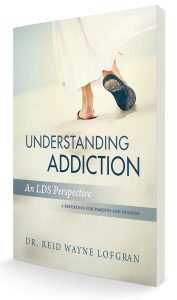
 Alcohol has been available to humans from the beginning or recorded history. Research is showing that more than one “drink” a day is potentially toxic. A drink varies in size based on the type of beverage, and the concentration of alcohol in the drink.
Alcohol has been available to humans from the beginning or recorded history. Research is showing that more than one “drink” a day is potentially toxic. A drink varies in size based on the type of beverage, and the concentration of alcohol in the drink.
One “drink” contains about 14 grams of pure alcohol. This equates to 12 ounces (1 can) of beer, 8 ounces of malt liquor, 5 ounces of wine, 1.5 ounces of hard liquor.
Alcohol has been a norm in societies for thousands of years. Some have recognized the cost of alcohol to society and have tried to ban it, but alcohol has always been readily accessible, even when made illegal. It has been a drug of choice for rich and poor alike.
Some cultures perceive alcohol as a normal part of life, while others consider the consumption of alcohol to be dangerous and unacceptable. America, as a melting pot of the world, has various ideas and concepts regarding alcohol consumption, ranging from a harmless social event to a crippling and deadly disease. Over 86% of Americans try alcohol at some time in their lives, and 56% of Americans report they drank alcohol within the past month.
Alcohol can be addicting, whether it be used socially or habitually. Binge drinking is a form of abuse that can be very dangerous. Alcohol misuse cost America $249 billion in 2010, and 75% of that cost was from binge drinking. Approximately 88,000 deaths result from alcohol related deaths every year. World-wide alcohol contributes to 3.3 million deaths a year, and the World Health Organization reports alcohol plays a role in over 200 disease processes. Alcohol is also credited for reducing risk in several major disease, such as stroke, heart disease, and diabetes. The research is ongoing, and the risks and the benefits of even small amounts of alcohol consumption is an ongoing debate.
For more statistics on alcohol see:https://www.niaaa.nih.gov/



- decreased inhibitions
- sensation of warmth, flushing of skin
- mild impairment of judgement
- more social
- slurring of speech
- loss of problem solving ability
- emotional instability
- inappropriate social interactions
- loss of fine motor skills
- double vision
- lethargy
- loss of gross motor skills
- staggering gait, slurred speech
- memory loss
- stupor
- deep sleep
- coma
- incontinent
- respiratory suppression
- low blood pressure
- vomiting
- aspiration of vomit
- breathing stops
- circulation collapses
- Motor vehicle accidents
- Injuries
- Burns
- Violence
- Suicide
- Homicide
- Sexual Assault
- High risk behaviors, drugs, sex
- Alcohol toxicity


- anxiety
- tremors
- high blood pressure
- rapid heart rate
- irritability
- agitation
- seizures
- delirium tremens
- nausea and vomiting
- headache
- insomnia
- hallucinations
- confusion
- sweating
- fevers
- Social instability
- Family dysfunction
- Depression
- Anxiety
- Insomnia
- Liver cirrhosis
- Cardiomyopathy (enlarged heart)
- Heart arrhythmias
- High blood pressure
- Anemia
- Ulcers
- Pancreatitis
- Strokes
- Memory loss
- Dementia
- Liver cancer
- Stomach cancer
- Mouth, larynx, and throat cancers
- Esophageal cancer
- Colon cancer
- Breast cancer
- School failure
- Unemployment
- Addiction
- Fetal Alcohol Syndrome
- Seizures
- Gout
- Nerve damage
- Incontinence
- Constipation
- Weakness
- Numbness and burning
- Sexual dysfunction
- Abdominal pain
- Chronic diarrhea
- Sexually transmitted diseases
